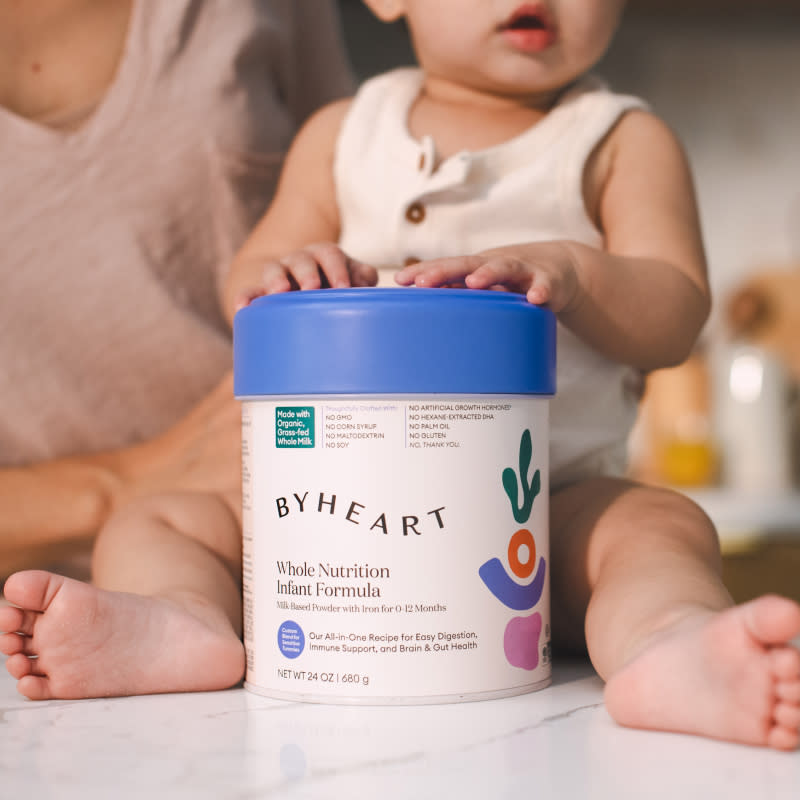5 Steps to Take if Breastfeeding Doesn’t Go as Planned
After breastfeeding my first four children, I went into my fifth pregnancy fully intent on nursing again. The only problem? My baby had other plans. Not only did she decide to show up five weeks early as a preemie, but she also refused to breastfeed in any way, shape or form. Although I had plenty of experience with my other children and working as an OB nurse, my breastfeeding plans completely changed overnight.
The truth is, even the best-laid breastfeeding plans go awry sometimes. But as I learned, it’s okay for your feeding journey to look a little different than you imagined. Here’s what to do when breastfeeding doesn’t go as planned.
There are many physical factors—like low milk supply, latching issues or baby’s medical conditions—that could contribute to a parent not being able to breastfeed adequately, but it’s also very important to remember that as a lactating parent, your emotional and mental health should be equally considered.
“Parent health is important too,” says Krystyn Parks, MS, RD, IBCLC and owner of Feeding Made Easy, LLC. She also shared that if she sees any signs that breastfeeding is affecting someone’s mental health, in addition to trying to get them appropriate support, she also tries to initiate a conversation about other feeding options. “If formula-feeding or supplementing helps the parent’s mental health, that will help the entire family,” she says.
No matter how your feeding journey may diverge from your original plan, it’s important to give yourself the space to grieve the loss of what you thought it would look like. Hannah Whittaker, pregnancy and pediatric dietitian and owner of bump2baby nutrition, explains that “normalizing the emotions” associated with this major change of plans is essential. There are no right or wrong feelings, and it’s okay to experience anything from disappointment to anger or sadness.
For me, breastfeeding had always been a deeply personal bonding experience with my baby, as well as a source of pride in my mothering “abilities.” I needed to grieve that loss to move forward with a new plan when my baby wouldn’t nurse. Discuss your feelings with a loved one, friend or professional, acknowledge them, and give yourself space to process them however you need to.
As a nurse, Trish Ringley, RN, BSN, explains that many parents who planned to breastfeed are forced to change course. “It’s important to remember that every breastfeeding journey is unique, and it’s okay to encounter challenges along the way,” she says.
When those challenges hit, it can be helpful to not look too far into the future, but instead, focus on one main priority for you and your baby at present. Maybe baby is in the NICU and simply needs nutrition to reach an adequate weight. Or perhaps your mental health needs to be prioritized first and foremost.
Once I accepted that my daughter would not be physically nursing from my breast, I decided my priority was simply providing her with breast milk for as long as I could. That’s when I turned to pumping and began supplementing with formula when I could no longer keep up. “Ultimately, what’s most important is that babies receive the nutrition they need to thrive, whether that’s through breastfeeding, pumping or formula feeding,” Ringley says.
One of the pros of opening up your feeding options is that it doesn’t have to be a “forever” decision, explains Parks. “Supplementing or offering formula isn’t all or nothing and it’s not giving up,” she says. “Supplementing or combo feeding may be temporary or it may last the rest of the feeding journey. It can be as little or as much as the parent wants or needs.”
So for now, if you decide the best plan for you and your baby is to supplement or switch to formula, remember that it’s okay to focus on what’s working at this moment. “Most parents end up using formula at some point in their feeding journey,” Parks points out. In fact, according to the CDC, 75 percent of babies receive some kind of formula by 6 months old.
Some parents also find it comforting to be able to choose exactly what type of formula and ingredients are best for their baby. I did endless amounts of research and spoke with many other formula-feeding parents before I settled on a formula I felt comfortable with. If my baby couldn’t have breastmilk, I wanted her to have the next best thing. Choosing a product like ByHeart, which has a patented protein blend that gets the closest to breastmilk, can help ease the transition for both you and baby.
If and when you do make the switch to formula, these tips may help:
- Use a slow-flow bottle nipple that mimics the breast’s natural shape and feel.
- Do skin-to-skin when bottle-feeding.
- Go slowly—it may take several weeks for baby to fully adjust to a new formula.
- Many babies can switch straight to formula, but it might be helpful to mix breast milk with the formula initially, then gradually taper it down.
- Expect changes to your baby’s stool.
- Let your doctor know if your baby shows any signs of discomfort or intolerance.
- Experiment with different feeding positions to help baby adjust to the bottle and promote bonding. (Hint: Previously breastfed babies may enjoy a side-lying position.)
Speaking of bonding while formula feeding, Parks points out that bottle-feeding also provides other family members and loved ones the unique opportunity to play a role in feeding and bonding with baby—as well as the chance for you to receive additional help and support.
For example, I went from eight straight years of exclusively nursing to suddenly having the chance to have my husband help with bottles, get up at night—and glory of glories, I got to sleep for longer than a few hours at a time. After I moved through the emotions of the end of my breastfeeding journey, I looked for ways to embrace the other opportunities formula feeding provided.
Choosing a formula I felt good about feeding my baby helped me feel more empowered when it came time to feed her. And much to my surprise, I found that formula and bottle feeding was just as bonding and loving as breastfeeding had been. “It’s important to remember that feeding a baby, regardless of the method, is an act of love and nurturing, and there should be no shame or guilt attached to any feeding choices,” says Ringley.
Our pick: ByHeart Whole Nutrition Infant Formula
After over five years studying breast milk and its nutrients, ByHeart uses organic, grass-fed whole milk in their mix as well as the two main proteins found in breastmilk—lactoferrin and alpha-lactalbumin. They also conducted the largest clinical trial by a new infant formula company in 25 years proving benefits like easier digestion, softer poops and less spit up when compared to a leading infant formula.
ByHeart Whole Nutrition Infant formula (24 oz), $42; ByHeart.com
About the experts:
Krystyn Parks is a pediatric dietitian and lactation consultant, who has authored two nutrition e-books about formula feeding and introducing allergens. She shares her knowledge and services at Feeding Made Easy.
Hannah Whittaker is a registered dietitian, an expert in CMPA (cow’s milk protein allergy), veganism, plant-based pregnancy and the owner of bump2baby nutrition.
Trish Ringley, RN, BSN, has been a NICU nurse for over 25 years and is the CEO and founder of Every Tiny Thing, which provides specialty items specifically suited to the needs of NICU babies, as well as education and support for families with babies in the NICU.
Please note: The Bump and the materials and information it contains are not intended to, and do not constitute, medical or other health advice or diagnosis and should not be used as such. You should always consult with a qualified physician or health professional about your specific circumstances.
Navigate forward to interact with the calendar and select a date. Press the question mark key to get the keyboard shortcuts for changing dates.





















































